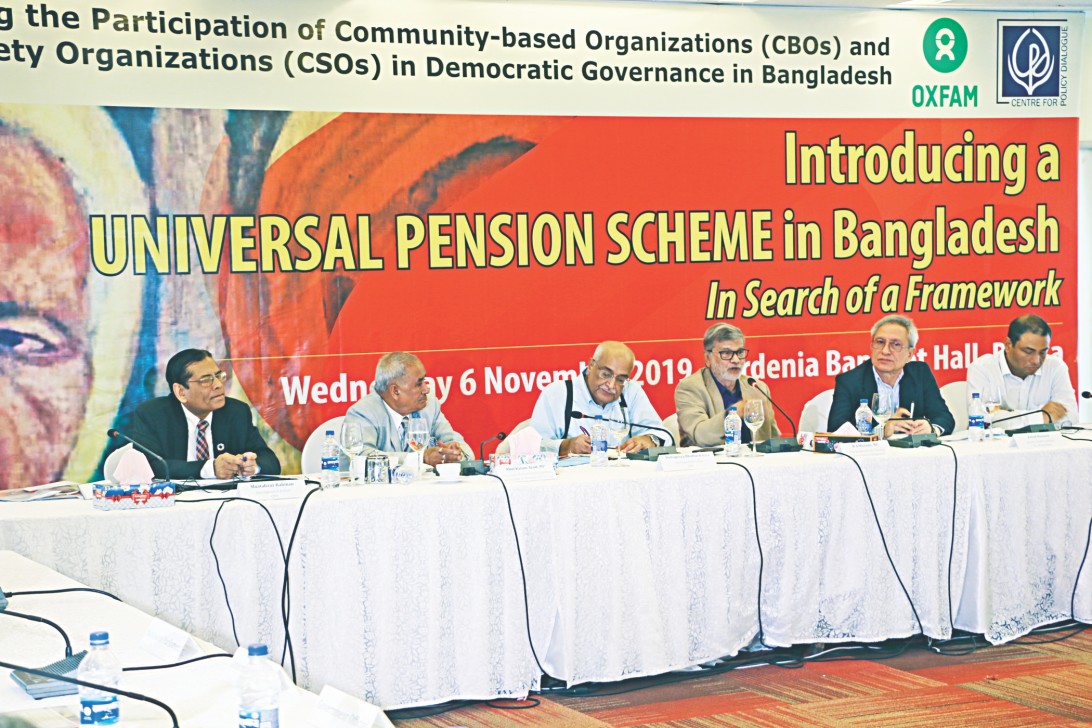Low tax-GDP ratio bar to universal pension scheme

Bangladesh’s very low tax-GDP ratio of about 10 percent is a key constraint in introducing a universal pension scheme for citizens above 65 years of age, excluding holders of government pension and private sector provident fund and gratuity.
Without visible improvement in revenue collection, the scheme’s introduction will be challenging and result in lower allocation for other competing expenditures.
The apprehensions came at a dialogue on “Introducing ‘Universal Pension Scheme’ in Bangladesh: In Search of a Framework”, organised by the Centre for Policy Dialogue (CPD) and Oxfam in Bangladesh at the Gardenia hall in Dhaka yesterday.
Prof Mustafizur Rahman, distinguished fellow of the CPD, gave a keynote presentation.
In it, he cited that Bangladesh had a predominantly informal labour market with workers of low income, making them unwilling or unable to contribute.
With their employers having no formal pension plans, bringing forth a contributory pension scheme would result in high administrative and transaction costs and make it difficult to take advantage of economies of scale, he said.
Financial inclusion poses another hurdle with nearly 50 percent of the population still unbanked, only 41 percent having access to financial institutions and almost half of the elderly population out of coverage of the banking system, said Rahman.
A critical challenge is weak administrative and management capacities, with neither public nor private sector schemes active in the capital market while the banking sector not adequately prepared to provide secure services needed for operationalisation of the scheme, he added.
The number of people over 60 years of age is projected to rise from about 12.6 million, which is about 8 percent of the population, in 2017 to 20.7 million, which is around 11 percent of the population, by 2031, he said.
In this context, Rahman suggested examples of financing frameworks.
One was that a benefit of Tk 1,853 per month, equivalent to a lower poverty line, in fiscal 2016-17 would have annually cost 0.5 to 0.7 percent of the GDP and 4.5 to 7.2 percent of revenue.
This cost would increase to 0.6 to 0.9 percent of the GDP and 5.5 to 8.8 percent of revenue annually if the benefit amounted to Tk 2,264, equivalent to an upper poverty line, by fiscal year 2029-30. Rahman recommended mobilising an additional 2 to 3 percent GDP-equivalent tax to establish the universal pension scheme.
He also said if the government was able to implement its public finance management strategy of 2016-2021, the tax-GDP ratio could be raised to 14 percent by 2023, helping to cushion the scheme’s introduction.
Planning Minister MA Mannan was the chief guest while Abul Kalam Azad, chairman of the parliamentary standing committee of the ministry, special guest and Dr Zahid Hussain, former lead economist at World Bank, special commentator at the dialogue.
Dr Debapriya Bhattacharya, distinguished fellow at the CPD, chaired the session.
